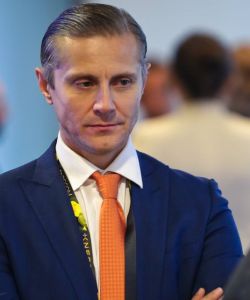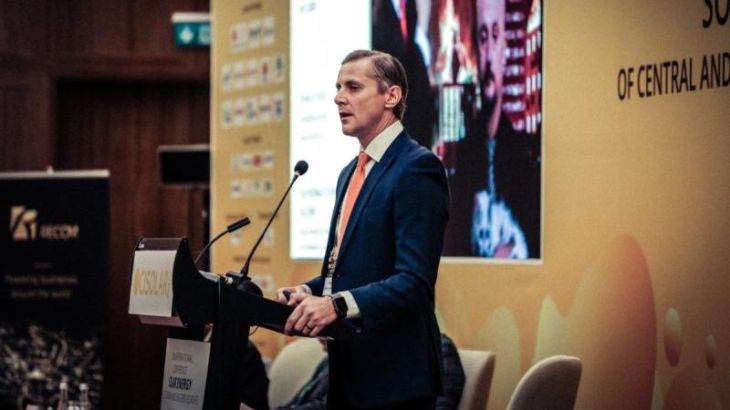
CEO of IB Centre, Co-chair of CISOLAR 2024 Bucharest
The co-founder and first President of the Renewable Energy Association of Ukraine
Today, Romania is one of the most promising markets for renewable energy in Europe. A number of international players have planned or already begun large-scale projects in solar and wind energy segments, as well as energy storage. The portfolios of many players have already exceeded a total capacity of 1 GW. Particularly, a giant leap has been seen in solar energy.
However, in the race for record-setting capacities, one should not forget about creating added value within the country. Sooner or later, the plans for construction, in line with Romania’s energy system capabilities, will be achieved, and the boom period will sharply change to a market decline with all the corresponding negative consequences for most of its participants.
We have already seen this in several European countries and even in California — the center of renewable energy development in the USA. In particular, after April 1, 2023, when new net metering rules came into effect in California, about 80% of companies in the solar energy segment either went bankrupt or were on the verge of bankruptcy.
The ultimate beneficiaries of such market changes will only be the large generating companies. I don’t want to say that this is bad. It’s just a natural market process.
However, if the government is interested in the comprehensive development of the industry, it should also pay attention to the related manufacturing. On the path to a green transition, this has immense strategic significance: reducing dependence on imported equipment.
Also, one should not forget about the potential creation of tens of thousands of new jobs. Especially since Romania has a number of geographical, economic, and resource advantages over many European countries.
Recent news regarding joint projects between Romania and Azerbaijan in the energy sector is a great confirmation of this. I am confident that the construction of gas terminals and the laying of cables along the bottom of the Black Sea for the sale of Azerbaijani green electricity to Europe is just the beginning.
It also makes sense to build new gas storage facilities in Romania, which other nations, like Ukraine, could use as outsourcing capacity after its gas infrastructure became a top target for Russian missile strikes in March.
But let’s get back to renewable energy. Last year, two major international equipment manufacturers for renewable energy, German AE Solar and American Enphase Energy, announced their plans to start production in Romania.
Thanks to a partnership with the outsourcing manufacturing giant Flex (the company is also headquartered in California), Enphase Energy began production of microinverters in the second quarter of 2023 at its plant in Timișoara.
The AE Solar project, worth 1 billion euros, is still in the design stage. The company applied last year for a 15 million euro grant under the National Recovery and Resilience Plan (part of the European Union’s Recovery and Resilience Facility).
Additionally, Attila Keresztes, a Hungarian businessman, founded Sunflower Hundred, which applied for a 20 million euro grant to build a solar module plant in Romania (in Turnu Magurele).
Another company with Hungarian founders, Profiton, requested 24.5 million euros for a plant for the production and disposal of solar modules in Targu Secuiesc (Transylvania).
Several Asian inverter manufacturers in our private conversations have confirmed their interest in localizing production in Romania. News about new projects is expected to come out by the end of 2024.
I would like to remind you that within the NRRP, Romania has 200 million euros for projects in the production and processing of solar modules and battery cells. The goal is to achieve a 200 MW annual capacity for solar energy equipment and 2 GW for batteries by the end of 2025. Is this a lot or a little? This is a trifle.
You might ask me; how can you compete with manufacturers of such equipment from Asia? You don’t need to compete with them because it no longer makes sense. Asian companies invest in production and R&D resources that are simply unavailable to European companies due to different economic weight categories.
Plus, I want to point out that practically all processing capacities for rare earth materials used in renewable energy are located in China.
The best way to cooperate is to create the most favorable conditions for cooperation and localization of production in Romania.
Today, several European industry associations propose to introduce a so-called local component for renewable energy projects in the EU: economic benefits from the use of local equipment. However, it is expected that this scheme will be voluntary for companies.
Romania has five free economic zones: Curtici-Arad Free Trade Zone (Curtici), Braila Free Zone Administration (Braila), Galati Free Trade Zone (Danube), Giurgiu Free Zone (Giurgiu), Sulina Free Zone Administration (Danube). These special economic structures offer quite attractive conditions for industrial and trading companies overall, but in my conversations with my Romanian colleagues, I often heard the word “bureaucracy” as the main obstacle to the active development of projects.
Yes, this problem is not only typical for Romania. In many European countries, excellent initiatives often get bogged down due to an inert legislative system.
Companies and investors go where there are not only resources and clear rules of the game but also a maximally simplified permitting system. If this task is effectively addressed in Romania, the country will quickly become the main production and transport hub for the energy industry in the region of Central and Eastern Europe.
